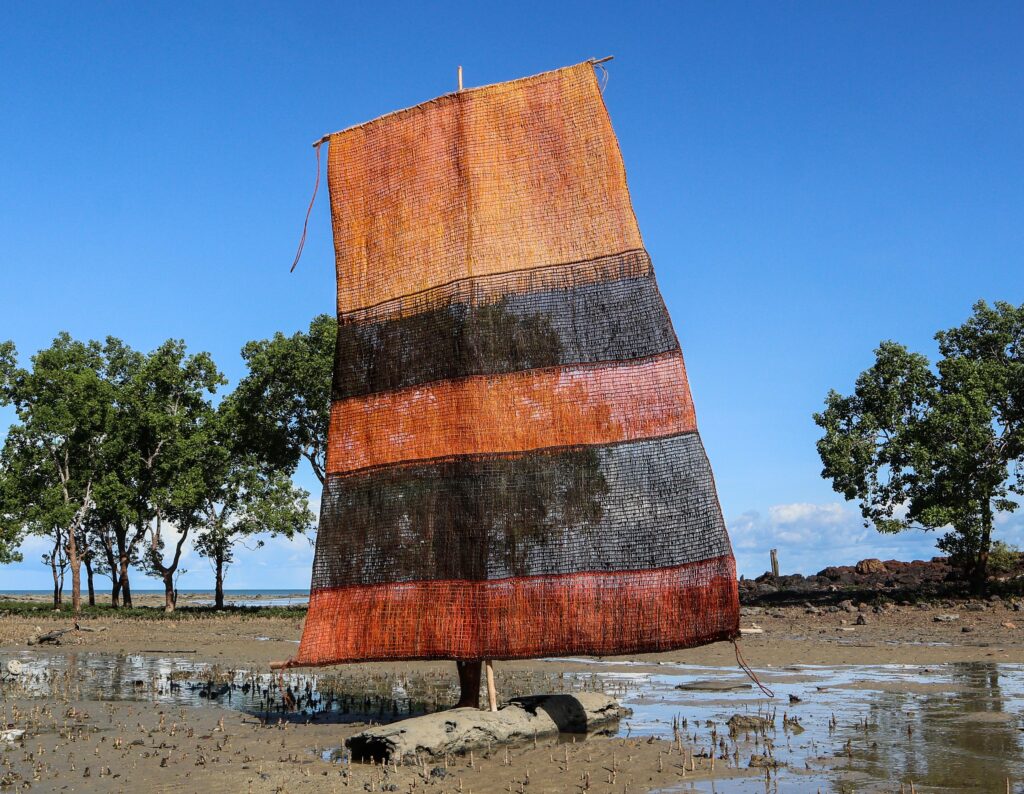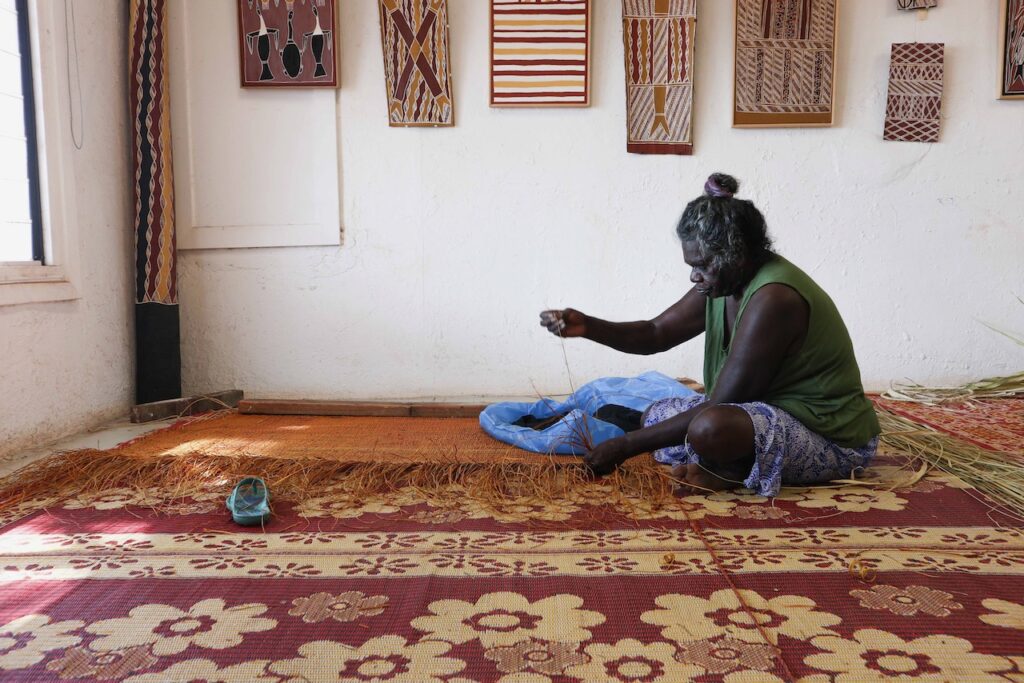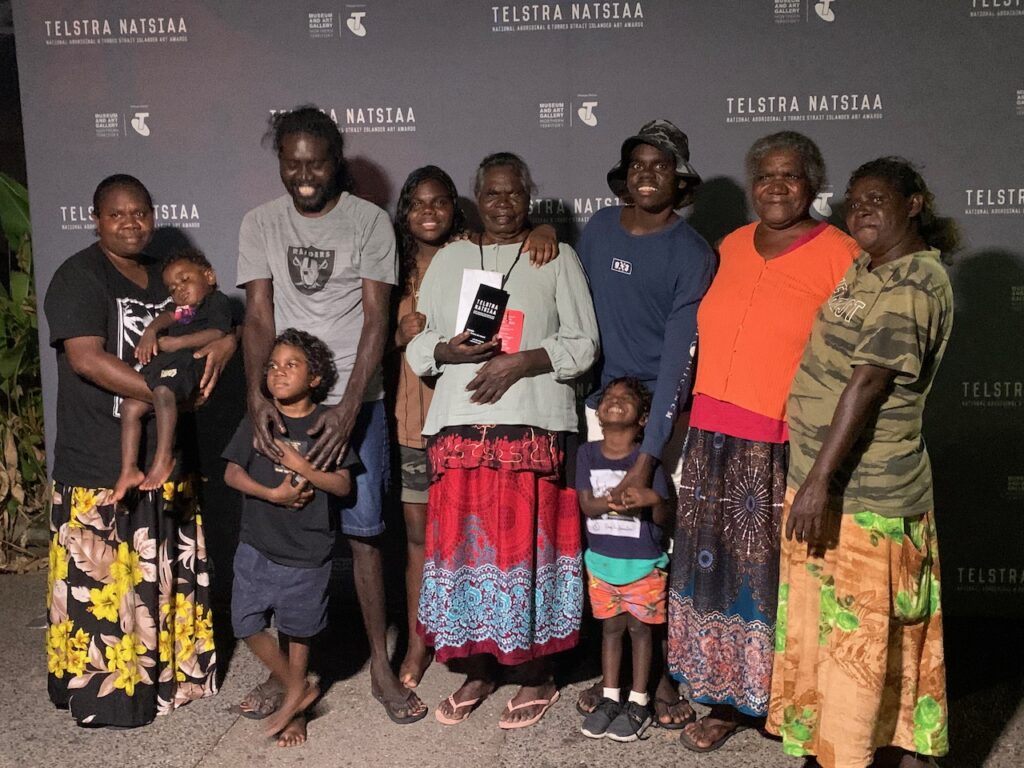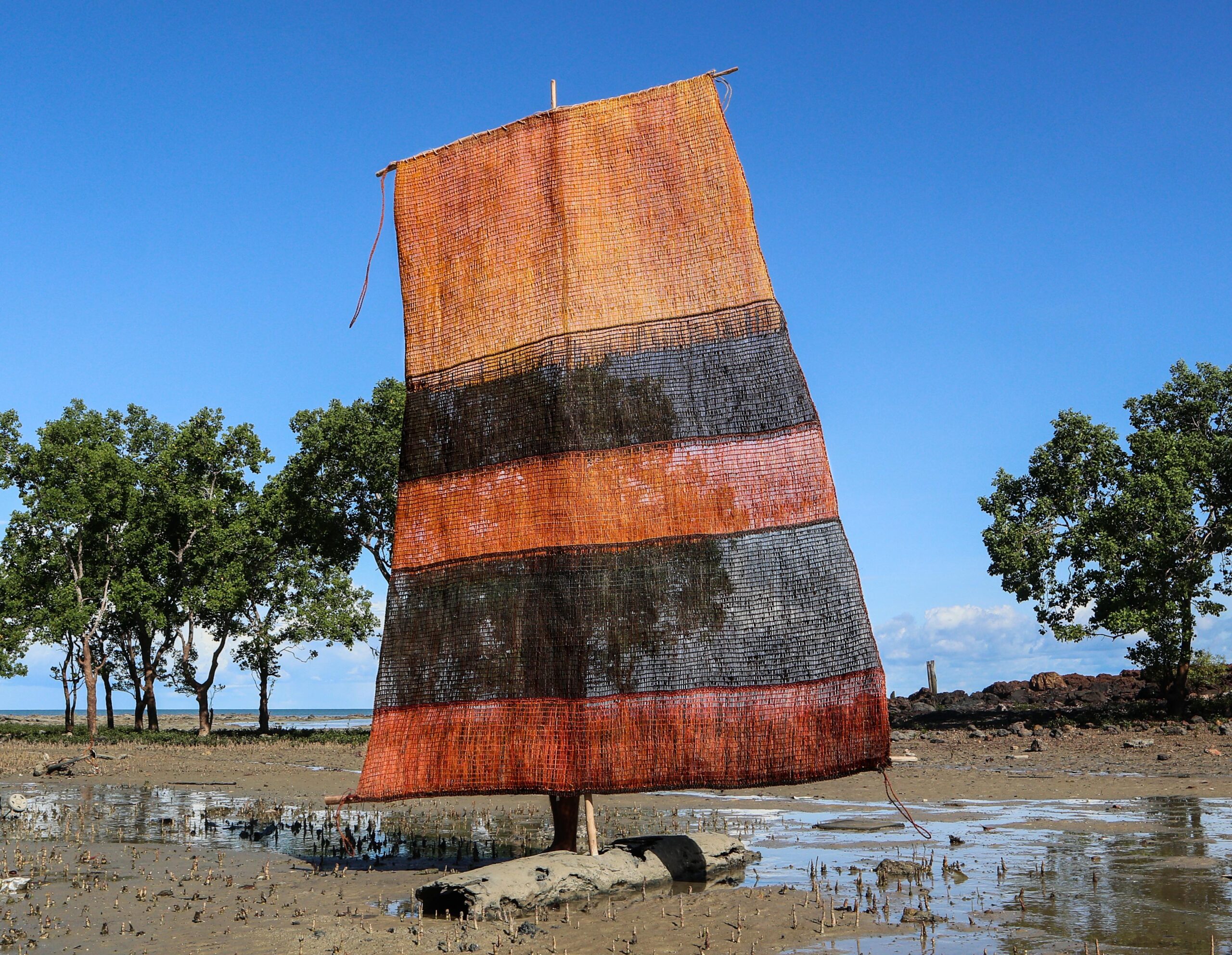
Margaret Rarru Garrawurra is the first singular fibre artist to win the prestigious National Aboriginal and Torres Strait Islander (NATSIAA) Art Award. Her win also marks the first twined fibre artwork* to be awarded. Dhomala is a monumental artwork inspired by Rarru’s memory of her father and her unwavering artistic vision.
Rarru’s Dhomala stands 4 meters tall and is supported by a wooden mast with twined bark ropes that can be pulled to manipulate the sail and catch the wind that in turn would direct a canoe. Rarru recalls watching her father make and use dhomala to sail his canoe when she was a young girl growing up in the Crocodile Islands of far North Arnhem Land.
Rarru acknowledges the influence of Makassan sailors and their prau (sailing boats) that inspired Yolŋu to begin weaving dhomala. Whilst honouring the craft of Yolŋu and Makassan sea farers, the scale of this work also highlights Rarru’s skill as a natural fibre dyer and colourist. Rarru has long been celebrated for her work in refining recipes for black natural dyes. Dhomala combines her signature black with panels of yellow, orange and red.
* The Blackstone Tjanpi Weavers collective won the NATSIA award in 2005 for their work Tjanpi Grass Toyota. This piece was made using a coil technique.

Rarru states:
‘This is a Makassan dhomala (sail). Yolŋu people were watching Makassan people weaving their dhomala, over time… Then they started to make them.
My father picked up the skill as well. He used to make them, Makassan dhomala.
I was watching my father making these dhomala. He was making them, and I was watching. I thought about how he made them, my father, and I started remembering. And now I’m making these.
Nowadays we women are doing it. Men were making it before. They watched the Makassans. Then they started making it. They’d remembered. They saw them at Milingimbi. Makassans came here. They sailed here with these dhomala. Then people watched them, and then learned.
My father also learned, and I obviously learned it. And we people here, men and women, can learn all of it. All of this work. This is not only women’s work but also men’s. That’s how it is. When we feel like it, we women, we can make one. Not only one of us can learn, not just one can make them, no. If we are good at making string, we can make them.’
– Margaret Rarru
Translation by Salome Harris and Margaret Gamuti

NATIONAL ABORIGINAL AND TORRES STRAIT ISLANDER ART AWARDS
Museum and Gallery Northern Territory
5 August to 15 January, 2023
Media links
Master Arnhem Land artist Margaret Rarru Garrawurra wins top prize in 2022 NATSIAA’s with sweeping woven sail – ABC News
Yolngu artist wins $100,000 for traditional weaving – NITV In Focus
Yolngu Artist Margaret Rarru Garrawurra Has Won the Richest Art Prize in Australia – Broadsheet
Natsiaa 2022: Indigenous artist Rarru wins first prize with hand-woven sail – The Guardian
An intricate tribute to love and learning wins Australia’s richest Indigenous art award – Sydney Morning Herald
